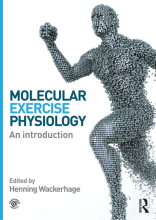Summary: General Toxicology
- This + 400k other summaries
- A unique study and practice tool
- Never study anything twice again
- Get the grades you hope for
- 100% sure, 100% understanding
Read the summary and the most important questions on General Toxicology
-
T2: Mechanisms
This is a preview. There are 23 more flashcards available for chapter 16/03/2021
Show more cards here -
How does the structured approach of studying toxicity looks like?
They look at the toxicant and the molecular interaction (MIE), then the key events are to look at the cellular response, the organ, and the organ systems. Then for adverse outcome they look further to organism and even population. -
What is the first step in studying the toxicant?
Looking at the properties of the chemicals. It can directly be toxic or only withmetabolic activation.
Some metals are directly toxic, or strong acids/bases, nicotine and CO are also direct toxic.
The most chemicals must be activated first.
There can also bereactive metabolites be formed duringbiotransformation processes. This can happen because ofinsertion of electrons, or veryreactive groups. -
What are the ways a toxicant can interact with a target molecule? (4)
1) Non covalent binding
a. Structural similarity with natural ligand: competition for physiological receptor
b. No structural similarity natural ligand
2) Covalent binding: reactions with macromolecules
3) Reactive oxygen species (hydrogen abstraction)
4) Electron transfer. -
Non covalent binding (a, structural similarity with natural ligand)
Thetoxicant can bind to a receptor and therefore work as anagonist , which stimulates signaltransduction ect. Or it can work as aantagonist , which blocks the signals. This binding is incompatition with the naturalligand and this process will be prohibited. -
Non covalent binding (b, no structural similarity with natural ligand)
Here thetoxicant does not have any similarities with the naturalligand and therefore it can not bind. But it can block, which reduces thepermability activation. Or it can modulate the process and this increases thepermeability activity. -
Indicate what is true about mechanisms of toxicity
-inhibition of oxygen binding to hemoglobin by CO is an example of non covalent binding causing toxicity
-Lipid peroxidation is can be caused by reactive oxygen species (ROS)
-Methemoglobinemia is caused by chemicals that cause electron transfer that oxidizes the Fe in hemoglobin from Fe2+ to Fe3+ -
What is the main different between non covalent and covalent binding?
Covalent binding is permanent binding to the molecule, non covalent is temporary. -
Which chemicals act by non-covalent interactions?
Tetrodoxin and saxitoxin -
T1: Introduction. history, principles
This is a preview. There are 24 more flashcards available for chapter 16/03/2021
Show more cards here -
Phase 2: Agriculture development
They werecooking the food and this allowed them tocultivate new plants containingnatural toxics . Through cooking they becamesave .
Also they started storing and transporting the foods, this introduced newtoxics likemoulds (mycotoxins ). -
Phase 3: Industrial development
The distance between food sources and consumers increased so they developed new methods sush as canning. Also chamicals were added for preservation or coloring.
There were also legal steps for guarantee food quality (end 19th century).
- Higher grades + faster learning
- Never study anything twice
- 100% sure, 100% understanding






























